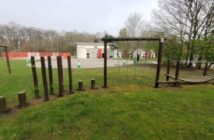Over the summer the coronavirus outbreak forced a lot of schools, colleges and universities to close their doors.
Though around 90% of educational institutions reopened in September, the situation with the pandemic is looking increasingly precarious, with a second wave already causing concern across the UK.
As such, teachers and leaders must be prepared to return to remote learning to deliver education in the future. However, as these are events we have never faced before – and eLearning is a relatively new development – many educators aren’t sure how to go about implementing their own remote learning program. Remote working adds another obstacle in the way of this. Fortunately, for those who are struggling, we have written this article today to serve as the ultimate guide for eLearning. Keep reading to find out what you need to know as a teacher or leader.
Main Considerations
Though remote learning is a brilliant solution for educators during the pandemic, it is important to note that there are still things you need to account for before implementing your remote teaching strategies. Here are some of the main things to consider:
- Internet Access
Not all families will have access to the internet. Educators should always be mindful of this and try to avoid relying on online activities too much if possible. Why not develop learning exercises which can be completed offline, too?
- Technology Access
Once again, teachers need to be aware that not all their students come from privileged families that can afford the remote-learning essentials, such as a computer or tablet. Some families might have just one device and with many parents still working from home, this might not be accessible for the student at the right time of the day. You may need to supply these devices to your pupils or record lessons for later viewing.
- Existing Tools
New tools that are required to implement remote learning can sometimes be outside of the school budget. As such, before going on a spending spree, it might be worth investigating what software you already have. Could you repurpose this to deliver your home education? You can save your organisation money this way.
- Data Protection
When investing in your new online learning tools, you need to give some thought to the data protection implications. It’s worth checking with your institution’s data protection officer to make sure that everything is fine in this regard. Though this shouldn’t impact how you deliver education with these eLearning tools, it needs to be considered regardless.
- Healthy Habits
Teachers should be aware that limiting screen time can be beneficial for children. As such, teachers need to remember to encourage their pupils to maintain healthy habits, like moving around when they have been sitting too long.
- Staff Support
To ensure that every teacher is able to deliver the same standard of education to their classes, leaders should provide them with sufficient support. This includes identifying activities for remote teaching and educating them on how to effectively implement eLearning tools.
- Establish Routines
Leaders should also agree with teachers what their expectations are. For example, they should establish a routine for when lessons are delivered, when activities are uploaded, ectara. In doing so, this should help your staff to manage their stress and work.
- School Portal
We imagine that most educational institutions will communicate to students and teachers through their school’s portal. Therefore, it’s important to make sure that your website can effectively support all your functions.
Learning Tools
Now we have discussed everything you need to be mindful of when implementing your remote learning strategies, let’s move onto the learning tools you will need. These are essential as otherwise it will be difficult to deliver education if another lockdown were to occur locally or nationwide. So, let’s look at some of the best eLearning tools that teachers should take advantage of.
- Classroom Cloud
Classroom.Cloud is a cloud-based classroom management and teaching platform. This software is easy to use and doesn’t cost much to use. It’s perfect for educators and leaders who are delivering remote learning. What’s more, it’s not exclusively used for remote learning – teachers will also find this software beneficial in the actual classroom. Using Classroom.Cloud, you can monitor your students’ screens, what they are typing and who they are communicating with. You can communicate with them easily and stop their screens when you need their attention. Teachers can even create polls to see how well everyone is understanding the lesson. Classroom.Cloud can manage behaviour, too, controlling what websites and applications can be used during the lessons. We highly recommend the software for delivering education effectively, especially when your students are learning from home.
- BBC Bitesize
BBC Bitesize has always been a valuable resource for teachers, but they have since expanded their services following on from the pandemic. Now, the website is creating daily lessons for Maths, English, Science and so on. This is a helpful resource for teachers to lean back on when structuring their home learning lessons. Also, bearing in mind your students might not have access to the school’s educational books when learning from home, Bitesize can provide the information and activities these would normally supply.
Advice on Strategies
You should have all the knowledge and learning tools you need to begin delivering home learning. Now, we are going to discuss the actual implementation of your strategies. These are our main tips for doing so.
- Create a Routine
Begin by recreating the structure of a typical school day. We recommend providing your students with a timetable of their lessons, keeping to the same days and same hours for every week. This will help to keep them in the right mindset for learning.
- Setting Activities
Don’t deliver all your teaching through video conferences. Set your students activities to complete during the lesson time, then reconvene to go through the answers and any questions they might have. Make sure not to overload them so they can thoroughly digest the material. Some students might require more facetime than others.
- Communicate with Parents
The children’s parents will likely become more involved in their learning now they are being taught from home. As such, educators might want to create a channel for communicating with the parents exclusively.
- Set Homework
It’s still important to keep setting your students homework during the pandemic. This will make sure they are on track and consolidating the knowledge they have learnt, even after lessons have finished.
- Review and Adapt
As we mentioned before, remote learning is still a relatively new development. Nobody is certain what the most effective methods for delivering education remotely are yet. So, teachers and leaders must be willing to constantly review and adapt their strategies. This will help you to identify what does and doesn’t work.
- Staying on Task
There are a lot more distractions at home for students. Teachers must be aware of this fact and monitor whether the pupils are staying on track. Fortunately, the eLearning software we mentioned before can help with that.
- Engaging Lessons
It’s incredibly important to ensure your lessons are engaging when teaching remotely. Pupils will have less motivation to participate properly, so you’ll need to create classes which they’ll actually want to partake in. Make use of eLearning tools which are equal parts fun and educational.
And that’s everything. We hope you have found our guide illuminating and helpful. Now you can begin planning your classes and delivering education effectively, even during a pandemic.





2 Comments
Constructive tips, thanks! The critical point in distance learning is to have access to technology. My studies in quarantine are not very successful because I do not always have access to a computer. My old computer has already outlived its usefulness 🙁 Luckily, I can still get quality help through the website reviews of the best student services.
Technology has indeed helped children to continue with their learning during this pandemic. Parents need to help their kids follow a routine. This can help them to focus on their virtual classes. Make the right choice in choosing an interactive learning tool. You can purchase customized home school furniture at https://www.inspaceschoolfurniture.com/, and create a positive learning environment at home.